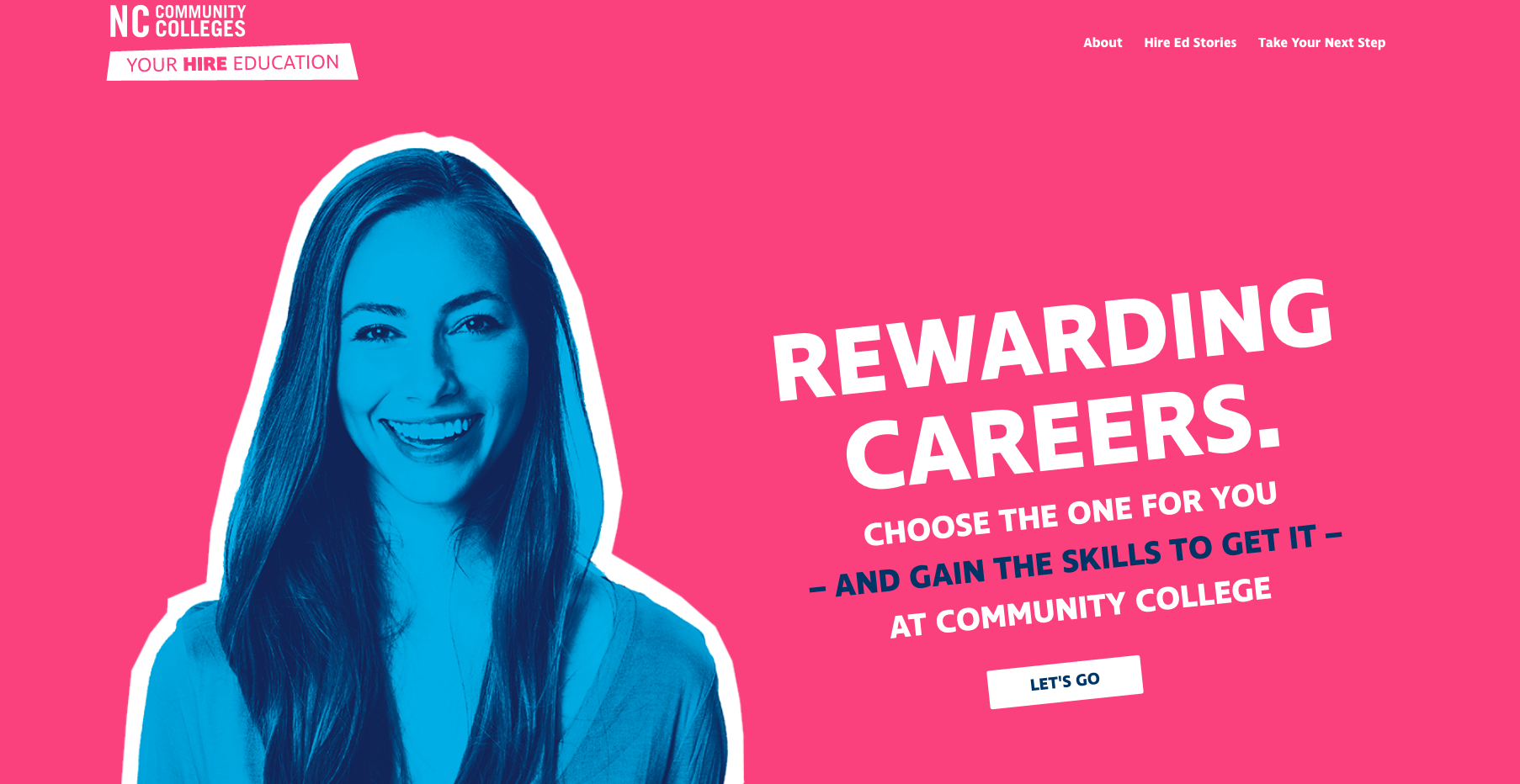Q&A with NC Community College System President Peter Hans

Today, nearly half of North Carolina’s employers are struggling to find the skilled talent they need to fill their open positions. Left unchecked, the problem will only continue to grow. By 2020, 67 percent of the jobs in our state will require a postsecondary degree or credential, but today, only 49 percent of North Carolinians have that training and educational attainment. It’s clear we need demand-driven, collaborative solutions to solve this problem—and effective allies and partners to help implement them.
Adapting to rapid technological change, population shifts across rural and urban areas and more, North Carolina’s 58 community colleges have been at the forefront of efforts to prepare our students for a competitive, changing workforce. Throughout the legislative session and beyond, we’ve been pleased to work on pressing issues like the skills gap and many others with NC Community College System President Peter Hans, a true champion for North Carolina’s students. Read on for President Hans’ insights in this exclusive Q&A with one of North Carolina’s top leaders in education.
How can employers work together with community colleges to address the skills gap?
One thing that employers can do right now is build relationships with their local colleges. We need constant engagement to be able to adapt to workforce needs, design new programs or improve the way we’re operating to be more responsive. The only way we can close the skills gap is by communicating and working together. Businesses also might consider becoming involved in ApprenticeshipNC as a way to build a pipeline of skilled employees. Last year, we increased the number of apprenticeships in North Carolina by nearly one-third. Business leaders are seeing the value in this program — investing in students as their future employees, who are earning while they’re learning. It really is a win-win.
Note from the NC Chamber: You can find your local community college and their contact information here.
One of the NC Chamber’s top priorities this legislative session was addressing the funding disparity between workforce continuing education and traditional academic programs. Can you explain this disparity and why it matters to the community colleges?
Because traditional academic programs were funded at a rate that was 34% higher than workforce training programs, colleges tended to offer vocational and trade programs in the longer format. Often, that meant that students were placed in sequential programs over several semesters rather than in short-term training courses. Last year, the legislature appropriated money to partially raise the funding for the workforce training programs, but still not on par with the curriculum programs.
This year, the budget approved by the legislature raises support for workforce programs to parity with the other programs. When the budget is finalized, this will go a long way toward improving the ability of colleges to adapt quickly to the needs of businesses and students. The career paths affected include electrical line workers, truck drivers, HVAC and electrical technicians, plumbers, carpenters, welders, construction workers, auto mechanics, paramedics, firefighters, nurse aides and pharmacy technicians. Time is money for our students, who need a good job and career path, and for employers, who seek skilled workers.
Are there any examples of employers and community colleges already working well together to address the skills gap?
We have so many examples of this. Rowan-Cabarrus and Mitchell community colleges have the NC Manufacturing Institute, which provides short-term training for a pipeline of certified technicians. Catawba Valley Community College has the Catawba Valley Furniture Academy, a program designed by furniture manufacturers to prepare students for skilled positions in high demand. Craven Community College has the Volt Center, with a mock assembly line provided by Moen. Blue Ridge Community College has the Southeastern Advanced Molding Technology Education Center, which was initially designed to meet the training needs of GF Linamar’s die cast facility. Cape Fear Community College offers fire alarm systems training and Sandhills Community College has a Fire Academy. Several colleges are helping to meet the demand for power line workers for Duke Energy and others. The list goes on and on.
How will the community colleges’ new marketing campaign help us reach myFutureNC’s goal of 2 million North Carolinians with high-quality, postsecondary degrees or credentials by 2030?
Thanks to the generosity of the John M. Belk Endowment and the NC Community Colleges Foundation, we launched our first-ever statewide marketing campaign this summer. We’re excited about this. We know that to reach the myFutureNC goal, we will have to bring more people through our doors in order to receive a high-quality degree, workforce certificate or other credential. The first step is letting people know what their community colleges have to offer. The message of the campaign is simple: choose a higher education focused on getting you hired – “Your Hire Education.” Our colorful ads are reaching millions of North Carolinians on billboards, TV, radio, print, the internet and social media.
A website accompanying the campaign features testimonials of graduates, potential salaries and an easy-to-use tool that connects prospective students to programs and career paths available at the 58 colleges.
We greatly appreciate the Chamber’s leadership and support!